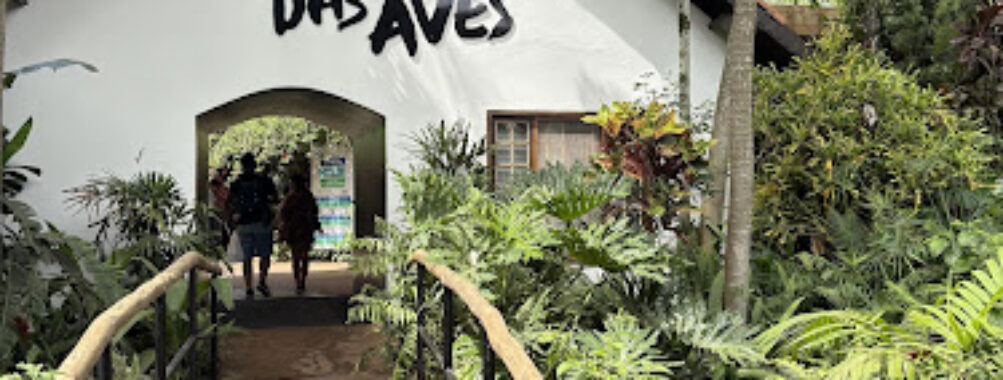
Parque das Aves
Table of Contents Parque das Aves in Foz do Iguaçu, Brazil, is a lush sanctuary dedicated to the beauty and conservation of birdlife that thrives in the Atlantic Forest. Set within roughly 16 hectares of protected land, it’s more than just a tourist stop—it’s an immersive walk through a living tapestry of sound, color, and movement. The air is filled with the chatter of parrots, the flapping wings of macaws, and, if you’re lucky, the delicate buzzing of hummingbirds darting between orchids. This place manages to be both peaceful and thrilling at once, balancing raw nature with well-thought-out accessibility for visitors. It’s one of those experiences that sticks with you long after you’ve left. What makes it truly special is how deeply it integrates with the surrounding environment. Located near the entrance of Iguaçu National Park, this conservation-driven attraction provides a front-row seat to some of Brazil’s most spectacular wildlife. Over 140 species call this sanctuary home, many of them rescued from trafficking or habitat loss. Visitors can walk through expansive aviaries—huge, walk-in sanctuaries—where toucans hop between branches just a few feet away, and colorful macaws stretch their wings above your head. I remember my first visit; I stopped mid-path, completely mesmerized by a curious toucan that decided I was interesting enough to investigate. That’s the kind of close, almost magical contact you can expect here. And it isn’t only about birds. There’s also a collection of reptiles and butterflies, each contributing to the park’s mission of education and biodiversity preservation. You’ll find lush trails winding through the vegetation, tiny ponds that mirror the forest canopy above, and viewing areas that invite you to pause and just breathe. The park’s women-led management has clearly poured heart and passion into making it inclusive and sustainable—it’s wheelchair accessible, LGBTQ+ friendly, and family-oriented. Whether you visit for a quiet morning stroll or as part of a larger tour around the Iguazu Falls area, it’s well worth spending a few hours exploring every corner. People often describe Parque das Aves as serene, and I get that. But what struck me more was how alive it feels. You can feel the pulse of the rainforest, hear the rhythm of life in the calls echoing through the trees. It’s conservation in action, but it’s also joy in its purest form. For travelers who love nature, photography, or simply slowing down to take it all in, this park offers an authentic glimpse into Brazil’s wild side. Timing your visit to Parque das Aves can make all the difference. If you ask me, mornings are the sweetest spot—the air is cool, the forest glows softly with filtered sunlight, and the birds are at their most active. The park opens early enough that you can enjoy the serenity before the midday crowd rolls in. Between August and October, when the humidity dips a little, the weather in Foz do Iguaçu is generally pleasant, and you’ll find the birds more lively during these cooler mornings. Rain isn’t necessarily a bad thing here. After a good shower, the forest smells richer, and the birds often come out in playful bursts of activity (plus, your photos turn out stunning with that glossy, rain-soaked greenery). Summer months can feel hot and humid—classic tropical Brazil—but it’s also when the forest seems most alive. Just take breaks in the shaded areas, hydrate, and don’t rush it. Whether you visit on a bright dry morning or a misty afternoon, the experience remains unforgettable. I’d say it’s best enjoyed as part of a half-day plan, pairing it with a trip to the falls, though some travelers linger longer, simply lost in the forest’s calm rhythm. Getting to Parque das Aves is blissfully straightforward, especially if you’re staying around Foz do Iguaçu. Most hotels and tour operators offer direct transfers to the park, and the distance from downtown is only about twenty minutes by car or bus. Public buses run regularly along the main road leading toward the national park entrance, making it an affordable and easy option for independent travelers. I’ve taken one of those buses myself—it’s slow but full of chatter, local families, and occasionally a parrot perched on someone’s shoulder (yes, really). If you prefer a bit more comfort, taxis and ride-hailing apps are reliable, and parking is readily available if you’re driving. The entrance to Parque das Aves sits right across from Iguaçu National Park, so if you plan on exploring both, it’s smart to combine them in one outing. Many visitors sandwich the park visit either before or after their fall excursion, depending on the weather. If you’re joining a guided tour of the Brazilian side of the Iguazu Falls, most itineraries include or can easily add a stop here—it’s practically next door. I’ve learned through a few visits—and a couple of rookie mistakes—how to get the most out of Parque das Aves. So, here’s what I’d tell a friend heading there tomorrow: Above all, go in with curiosity. Don’t just snap photos—listen to the forest, try to recognize bird calls, chat with the guides about their favorite species. It’s a place that rewards presence more than planning. I left my last visit with dozens of photos, sure, but even more, I left with a sense of quiet awe—a reminder of how beautifully everything in this corner of the world connects. If you’re traveling through Brazil’s south, make time for it. Parque das Aves isn’t just another stop; it’s a living, breathing story of conservation and wonder, told through wings and color.Description
Key Features
Best Time to Visit
How to Get There
Tips for Visiting
Location
Places to Stay Near Parque das Aves
Find and Book a Tour
Explore More Travel Guides
No reviews found! Be the first to review!